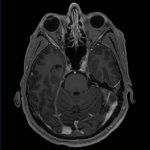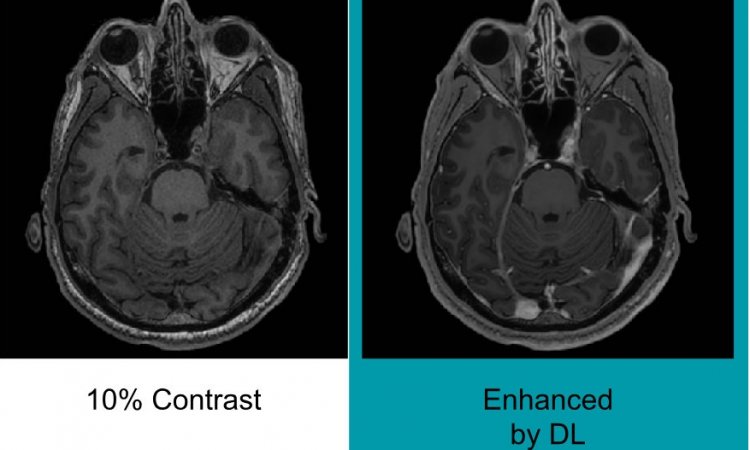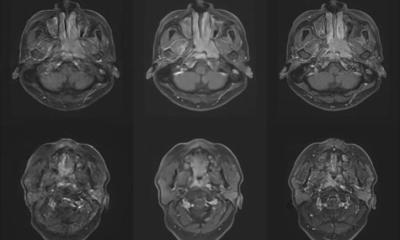Article • Future of contrast agents
Gadolinium in MRI is here to stay (at least for a while)
Manganese and iron oxide contrast agents can replace gadolinium-based contrast agents (GBCA) in a number of MRI examinations, but gadolinium remains a strong candidate when properly indicated, especially with AI-driven dose reduction and advances to increase relaxivity, a French expert explained at ECR 2020.
Report: Mélisande Rouger

GBCA have been MRI companions for many years. In France, 30% of all MR examinations are still being injected with GBCA despite the recent safety crisis, according to Prof Olivier Clément, Head of Imaging at Georges Pompidou European Hospital in Paris. “The crisis has not halted this use and I’m pretty sure this will not change in one day. Innovation in gadolinium based contrast media has been very active in the last 40 years,” he said.
GBCA have been withdrawn from the market after a number of studies described nephrogenic fibrosis in renal patients and the presence of gadolinium deposition in the brain. Today, only macrocyclic for non-specific enhancement and liver specific agents such as Primovist and Multihance are available. Scientific societies have issued recommendations on when patients should be injected with gadolinium. “We have to think twice before we inject a patient. Injection is not mandatory but should be guided by clinical indication. Dose should be as low as diagnostically possible,” he said. Researchers are actively working on solutions to get around current issues and three interesting scenarios are emerging.
Potential of AI in MRI
A first strategy is to decrease the dose and restore contrast with the help of AI. There is a lot of research on the topic in CT, and some papers have showed that AI can restore contrast between the liver and the tumour with one quarter of the dose. In MRI, studies have showed that contrast could be restored to the same quality as full dose with as low as one tenth of the dose. “That’s a very interesting development. New imaging processing algorithms will enable to restore the contrast obtained with lower doses of gadolinium chelate. Still we’re going to need to inject,” he said.
Another way to go is to create new gadolinium products with increased relaxivity and low protein binding. This has been done in the past with different contrast media, such as Guerbet’s P792, which allowed increasing relaxivity while interacting with water molecules. Today, researchers are working on a new compound using the same idea to increase relaxivity, in order to lower the dose to be injected. A number of studies have recently shown that relaxivity with Gadopiclenol, a macrocyclic GBCA, could be at least twice as high as with Multihance, and clinical trials in humans are undergoing.1
We foresee potential uses with iron oxide compound agents in cellular tissue therapies
Olivier Clément
A completely different and interesting track to explore is to change gadolinium to another contrast metal. Manganese and iron based contrast agents are two strong candidates for replacing GBCA, Clément explained. “We can use iron oxide particles, for example in liver imaging. These agents can also be useful to do cellular imaging, when these compounds are integrated with cell culture. We foresee potential uses with iron oxide compound agents in cellular tissue therapies,” he said. So far, iron oxide nanoparticles contrast agents have been “kind of disappointing” for liver applications and have been withdrawn from the market, Clément reports. Iron oxide nanoparticles are currently only being used for the treatment of iron deficiency. Contrast agents with ferric oxide (e.g. Resovist) could potentially be used as well, but these products haven’t been marketed yet.
Recommended article

News • Artificial intelligence
Deep learning may help reduce gadolinium dose in MRI
Researchers are using artificial intelligence to reduce the dose of contrast agents like Gadolinium that may be left behind in the body after MRI exams, according to a study presented at the annual meeting of the Radiological Society of North America (RSNA).
A major issue when developing contrast agents remains the long timeframe that unfolds between identification of a medical need and the final approval by regulatory bodies. “It takes about ten years to obtain regulatory approval for contrast agents. This is long compared with the very fast timeframe of technical development of MRI machines,” Clément said. Challenges to develop new agents are not just regulatory, but also financially, with long and expensive clinical trials, and issues of chemical scale up and final pricing. “It’s a big challenge for a company to invest in a new compound,” he said.
Given the current complexity, the future of GBCA is promising. “Economists foresee that we will still be using gadolinium to some extent and the market is set to grow in the near future,” he said. “I’m pretty sure we will use our old macrocyclic contrast agents in MRI for a long time, but we will have to optimize dose and indications. We might need higher relaxivity agents or we might need to decrease our dose and restore contrast with AI algorithms,” he concluded.
03.08.2020










